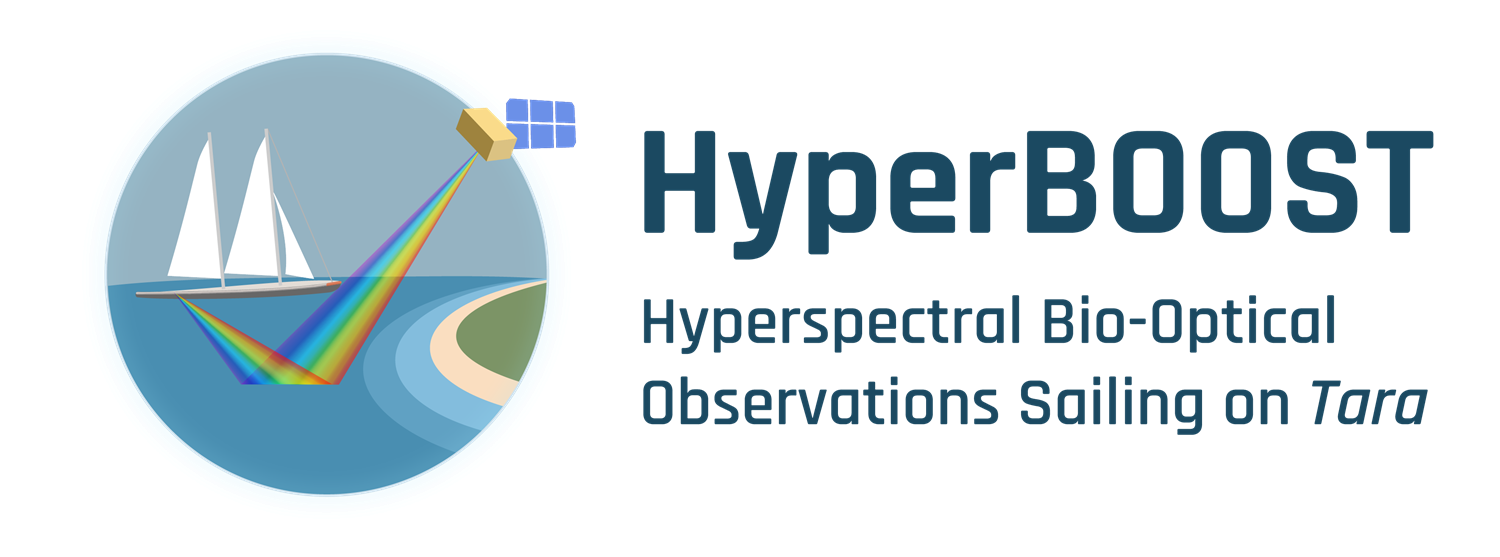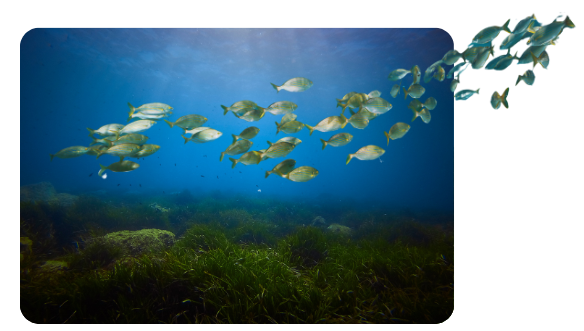Project
HyperBOOST – Hyperspectral Bio-Optical Observations Sailing on Tara

Project Start: June 2023 | Project End: June 2025
Project Funder: The European Space Agency (ESA)
Principal Investigator: Dr Victor Martinez-Vicente
Project Website: https://hyperboost.info/
Marine ecosystem health in coastal areas can be challenging to monitor using Earth Observation due to their optical complexity. HyperBOOST will address this by using in-situ hyperspectral bio-optical measurements for the validation of satellite data, useful to develop marine coastal biodiversity products when combined with biological measurements from the TARA-TREC expedition. HyperBOOST is an international collaboration between PML (UK), CNR (IT), LOV (FR) and U Maine (USA), supported by the European Space Agency (ESA).

The project is an extension to the ESA Biodiversity + Precursors: Coastal Ecosystems project Biodiversity of the Coastal Ocean: Monitoring with Earth Observation (BiCOME) to obtain in situ observations useful for validation of satellite products related to coastal biodiversity.
One of the key aspects of the project is the utilisation of the TARA schooner vessel for its capability to provide in-situ measurements at more than 120 land-sea transects along the European coastline. Installation work has already been completed on the vessel to install in-situ sensors; a Solar tracking radiometry platform (So-Rad) and a Hyperspectral Radiometer for Global & Diffuse Irradiance (HSP1).

The So-Rad instrumentation on the left and HSP1 on the right. Both are installed on to the vessel to provide crucial data
In-situ bio-optical datasets are crucial for assessing uncertainties in satellite ocean color measurements, especially in coastal waters. Collecting new data that matches current satellite measurements can enhance their reliability and support their use in estimating uncertainties, validating algorithms, and understanding the role of coastal areas in the global carbon cycle.
Factors like land adjacency effects, atmospheric aerosol mixtures, and high concentrations of optically active components pose challenges in accurately capturing signals reaching satellites. However, comprehensive campaigns with standardised protocols are scarce in the literature, with the most recent effort dating back about 20 years.
With upcoming hyperspectral missions and the need to update knowledge on optical properties, collecting new in-situ data relevant to these sensors becomes timely. Matching this dataset with current satellite measurements can enhance their value by estimating uncertainties in coastal waters, increasing the reliability of satellite products.
This, in turn, supports their use in assessing Essential Biodiversity Variables (EBV) and Essential Ocean Variables (EOV), such as in pelagic seascapes. Additionally, it provides a unique opportunity to validate algorithms for estimating chromophoric dissolved organic matter (CDOM) in coastal waters, which is vital for understanding the role of river estuaries in the global carbon cycle.
Aims
-
Provide validation data (in-situ hyperspectral radiometry, bio-optical, optically active components biogeochemical and biodiversity relevant data) in optically complex waters for several missions/products: S2, S3, Landsat8/9, PRISMA, ENMAP, PACE (stations during 2024)
-
Provide a hyperspectral bio-optical characterisation of European regional seas with a consistent set of instruments/measurement protocols
-
Validate satellite products from different sources
-
Preparation activities for ESA CHIME in coastal waters (Copernicus Hyperspectral Imaging Mission for the Environment)
Expected Impact
-
Assessment of uncertainties of EO products for European coastal waters
-
Optical characterisation of European waters. First coherent dataset after the Babin et al. 2003 studies
-
Enable future activities:
-
Preparation for CHIME (Copernicus Hyperspectral Imaging Mission for the Environment) L2 products
-
Algorithm development for Carbon studies, Land/Ocean fluxes, riverine fluxes, drivers/pressures, Ocean Health, Ocean Biodiversity
-
Scouting of ecologically significantly different areas to be proposed as future hyperspectral validation sites
-
About TARA-TREC
Embarking on a scientific expedition to tackle environmental challenges
A scientific voyage addressing environmental challenges is underway with TREC. The expedition takes researchers along the European coastlines, where they explore the biodiversity and molecular adaptability of microbial communities and selected organisms. The team specifically focuses on coastal habitats due to their rich species biodiversity and the often elevated pollution levels they face.
TREC brings together the expertise and resources of EMBL and various European partners, aiming to initiate a new era of exploration in coastal ecosystems. The primary objective is ambitious and time-sensitive: to observe, model, and understand the effects of changing environments on organisms and communities at the cellular and molecular levels. By delving into these intricate aspects, the researchers seek to gain valuable insights into the intricate dynamics of coastal ecosystems and the impact of environmental changes.

TREC’s sampling trip in Tallinn, Estonia, 26-28 June, 2023. Image source.
Project Updates
HyperBOOST kicks off
The kick-off meeting took place on June 23, 2023, bringing together scientists from Plymouth Marine Laboratory, Consiglio Nazionale delle Ricerche, Laboratoire d’Océanographie, and the University of Maine. In addition, two project officers from the European Space Agency attended the meeting. This meeting provided an opportunity for the participants to introduce themselves, showcasing their expertise and outlining their respective contributions to the project.
Project partners
 |
  |
 |
 |
Collaborating with
 |
 |

